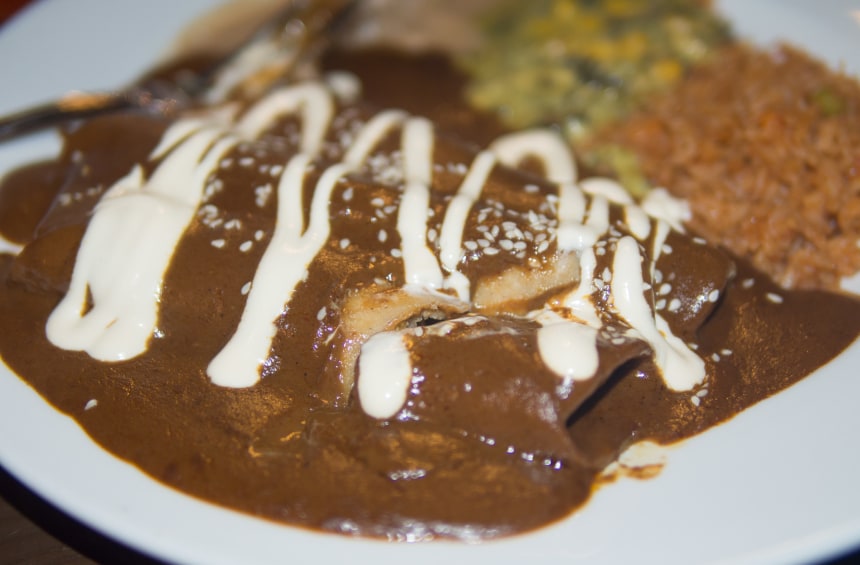| 10 mins read
Erin Skahan
For the food-minded traveler, the state of Oaxaca is the best place to begin a flavour-focused journey through Mexico. This southeastern region of the country benefits from an impressive level of geographical diversity, representing nearly 20 different cultures, each with their own culinary history. Pockets of the country like Oaxaca are the reason why Mexico was the first country in the world to be awarded UNESCO Culinary Heritage status. Oaxaca is a melting pot of cultures, ingredients, and styles of preparation. When you put all of it together, the result is a complex, bright, and unique cuisine that demonstrates how cultures interweave. Here is a travel guide to the defining characteristics of Oaxacan cuisine.
Regions and Cultures
An important factor contributing to the endless combinations of dishes in Oaxaca is the geographical diversity that lies within its borders. The landscape boasts of mountains, valleys, a sizeable Pacific coastline, and a tropical climate that allows the product to flourish year-round. This means you can tour several diverse regions all within a relatively short distance. You could book a fishing charter and spend the day sailing with a local fisherman on the coast and spend the next day tasting the local agave speciality spirit mezcal in a family-run distillery. Since mezcal isn’t (successfully) produced commercially- at least not yet- it remains an artisan trade. Distilleries are small and independently operated, safeguarding the authenticity of the practice. Mezcal is protected by Denominación de Origen (DOC) regulations.
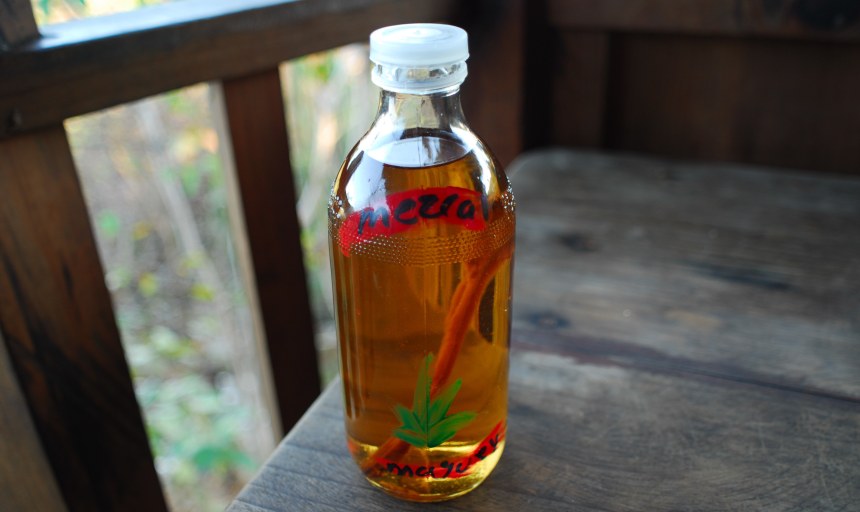
Next, head north into the Sierra Norte mountain range and book a few nights at an ecoturismo. If you’re looking for an active holiday, Ecotourism Benito Juárez has activities ranging from hiking, horseback riding, and zip-lining. It’s about an hour outside of Oaxaca city, tucked into a pine forest over 3,000 meters high. Arrange a guided tour to Santo Domingo Cacalotepec, a village that hides deep within the mountains, known for their organic farming practices and exceptional, award-winning locally grown coffee. Check out the Tierraventura agriturismos, strategically located throughout the various regions. You can book tours and guides for a variety of activities, from sports and language to cooking courses and history walks.
The central valley is the low lying region of the Sierra Madre, famous for the Monte Albán, the pyramid-like ancient ruins left behind by the Zapotec people.

Wild Foods and Foraging
The indigenous people of Oaxaca were skilled foragers. One of the reasons the food remains so varied to this day is because their foraging was so successful. Agriculture is mostly practised through monoculture, the mass planting of a single variety of crop. As ardent foragers who still rely on found foods, their bounty remains diverse, resulting in the creative use of wild foods such as greens and mushrooms. The Mixtec people, residing in the western parts of Oaxaca, famously gather grasshoppers in the winter months. Chapulines are considered a delicacy and provide a major source of protein. If your taste buds have a sense of adventure, head to the Mercado Benito Juárez in Oaxaca City and try the chapulin tacos.
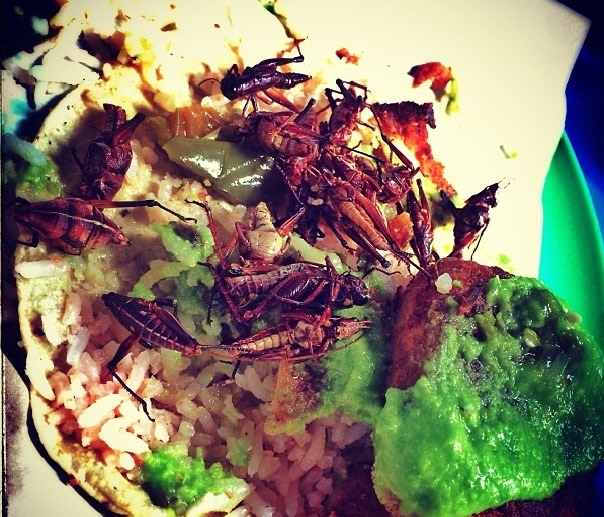
Foods to Try
The vibrant street food markets contain the biggest concentration and variety of Oaxacan classics. With over 200 varieties of heirloom corn, these markets provide the best opportunity to taste the impressive rainbow of options. Tlayudas are tortillas made with different combinations of heirloom corn flour, made to order by the women in the markets.
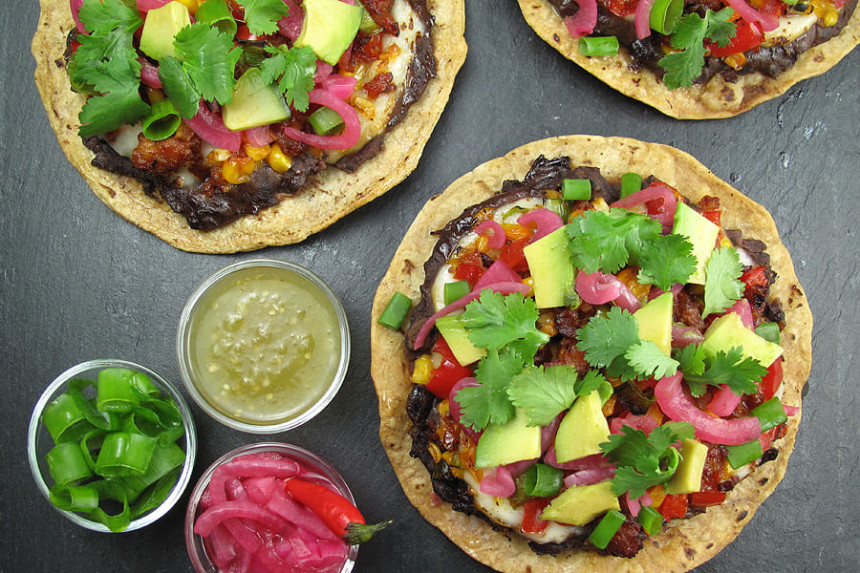
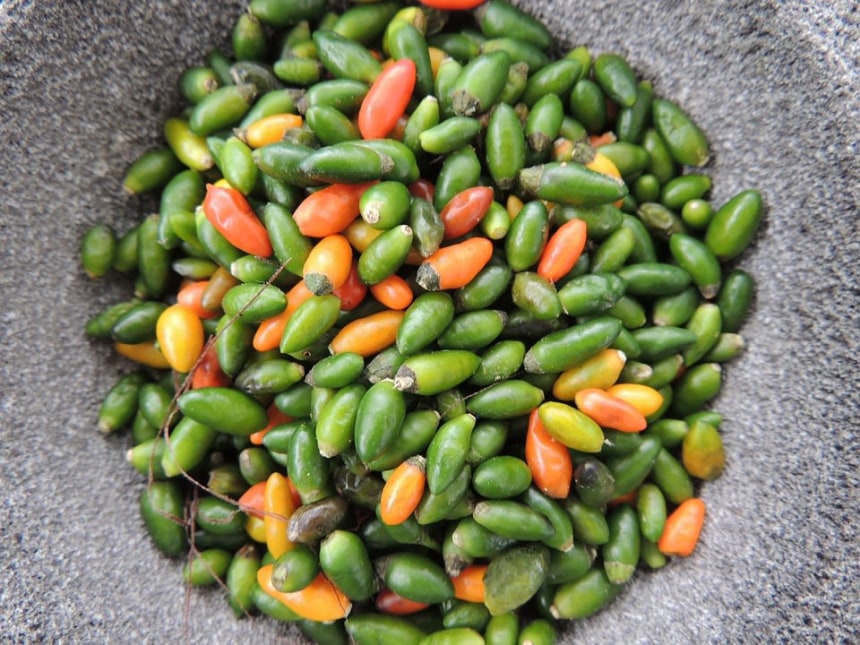
Oaxaca is also home to the peculiar and savoury mole. The state is known as the Land of the 7 Moles and actually boasts, not surprisingly, numerous variations of this sacred sauce.
The Oaxacan versions tend to include ancho, mulato, chipotle, or the aforementioned pasilla peppers. These are combined with spices like anise, clove, cumin, and sometimes cinnamon, then mixed with a base of tomatoes and either broth or water. Depending on the version, nuts, seeds, dried fruit or bread crumbs can be used to thicken the consistency and add depth. The most common you’ll find in the region is the poblano mole which utilises chocolate as an ingredient. The flavour melds with the pepper to create a complex, smokey sauce that best compliments turkey, chicken, or pork. To try the different versions of this favourite sauce, head to Fonda Florecita in the Mercado de la Merced. It’s casual sit down, street food style means you can try several small plates for a reasonable price. Another specialty not to be missed is tejate, or drink of the Gods as it was called in ancient times. This is a thick and creamy beverage that drinks like a meal, consisting of toasted corn flour, ground pits from the mamey sweet fruit, and cacao beans.
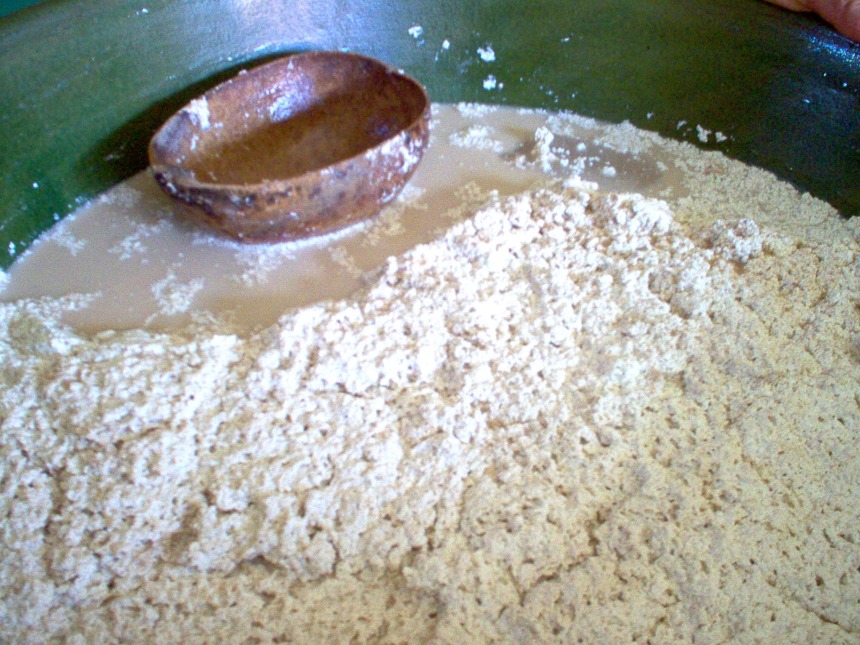
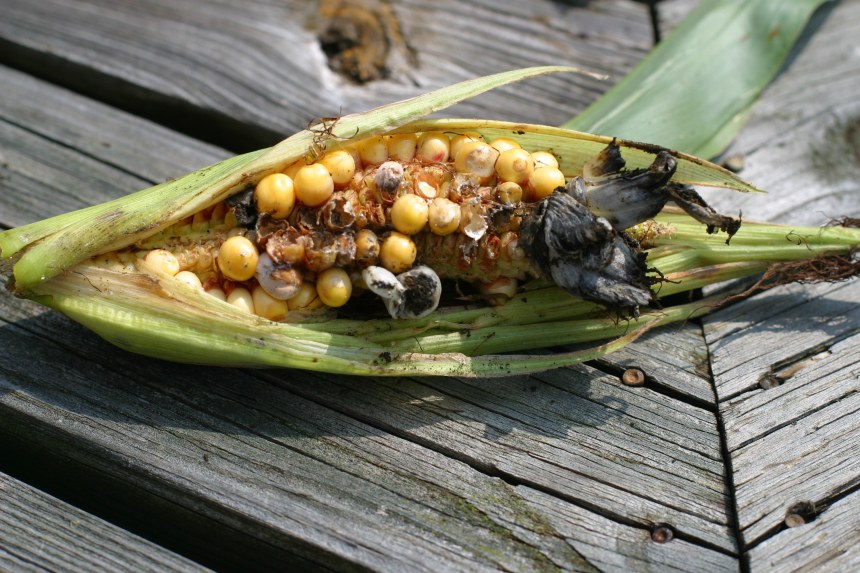
Fruits and Vegetables
With the constant availability of produce, it’s no surprise that Oaxacan markets remain stocked with colourful fruits and vegetables all year round. This makes the region an easy win for vegetarians, vegans, and those looking to cut back on meat or just try something different.
To discover these fresh, tropical flavours, head towards the coastal village of Puerto Escondido. The most famous beach, Playa Zicatela, is a little patch of paradise well known among experienced surfers, referred to as The Mexican Pipeline. The long history of surf culture here lends to it’s laid back beach vibe. Bars and informal cafes line the coast here, making it a relaxing locale to include on your travels. Rent a beach bungalow at the rustic, boutique hotelito Osa Mariposa, where you can meet other travellers at one of their vegan, family-style dinners or the friendly craft mezcal bar.
If you’re up to cooking, or just want to explore and sample your way through a local market, head to Mercado Benito Juarez. Even better if you go on a Saturday when you can meet and mingle with the farmers. You’ll be spoilt for choice here as you peruse the hyper colour rows of fresh and exotic fruits and vegetables. Try the fresh fruit juices made on the spot, especially from the rich guava fruit.
Vegetables are allowed to shine in Oaxacan cuisine, most brilliantly through the array of salsas you’ll find. Tacos with roasted peppers and onions, topped with stringy, salty Oaxacan cheese and a spoonful of fresh tomatillo or cabbage salsa will leave you wanting more. Handmade tamales with cheese and varieties of mole are popular, filling dishes. One of the most unique flavours you’ll frequently encounter here is that of anise, coming from the toasted leaves of the Mexican avocado. The leaves are called hojas de aguacate, and you’ll find them in everything from beans to moles, soups and tamales. The avocado fruit itself is also ubiquitous, served au naturale with tacos, or with added citrus and spices to make the famous guacamole.
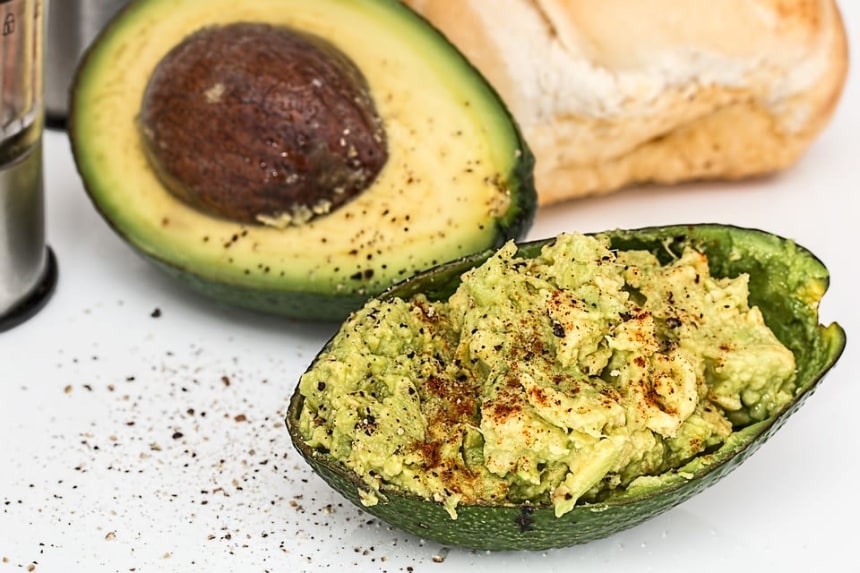
The coast is obviously a haven for seafood lovers, and what you’ll find is always fresh and affordable. Some incredible ceviche awaits at El Coste Ceviche and Grill, with stunning beach views from every angle. For a more casual spot, head to local favourite, The Bunker. If you are feeling up for a night swim, end the adventure by taking a dip at Laguna de Manialtepec, a small lagoon filled with bioluminescent plankton that gives off a beautiful blue glow as you swim. Booking a boat tour here from Puerto Escondido is a good idea, and tour guides often include several other hard to reach areas of interest, making a day or half day tour experience a worthwhile option.
"Erin is an experienced solo traveler, interested in how food shapes culture. She cooks and writes her way through cities and villages, primarily focusing on Western Europe."
Image details and licenses:
Mezcal: https://flic.kr/p/bihixZ (Marcos Ojeda, CC BY-NC-ND 2.0), Zapotec ruins: https://flic.kr/p/37B89P (Michael Swigart, CC BY-NC-ND 2.0), Chapulin Tacos: https://flic.kr/p/icyHi9 (Daniel Medel, CC BY-NC-ND 2.0), Tlayuda: https://flic.kr/p/a83Pvb (Aida Mollenkamp, CC BY-NC-ND 2.0), Mole enchiladas: https://flic.kr/p/km2Fpn (Kaveman743, CC BY-NC 2.0), Tejate: https://flic.kr/p/iXhop (Martha Silva, CC BY-SA 2.0), Huitlacoche: https://flic.kr/p/5pAqa (Jason Sewell, CC BY-NC 2.0)


